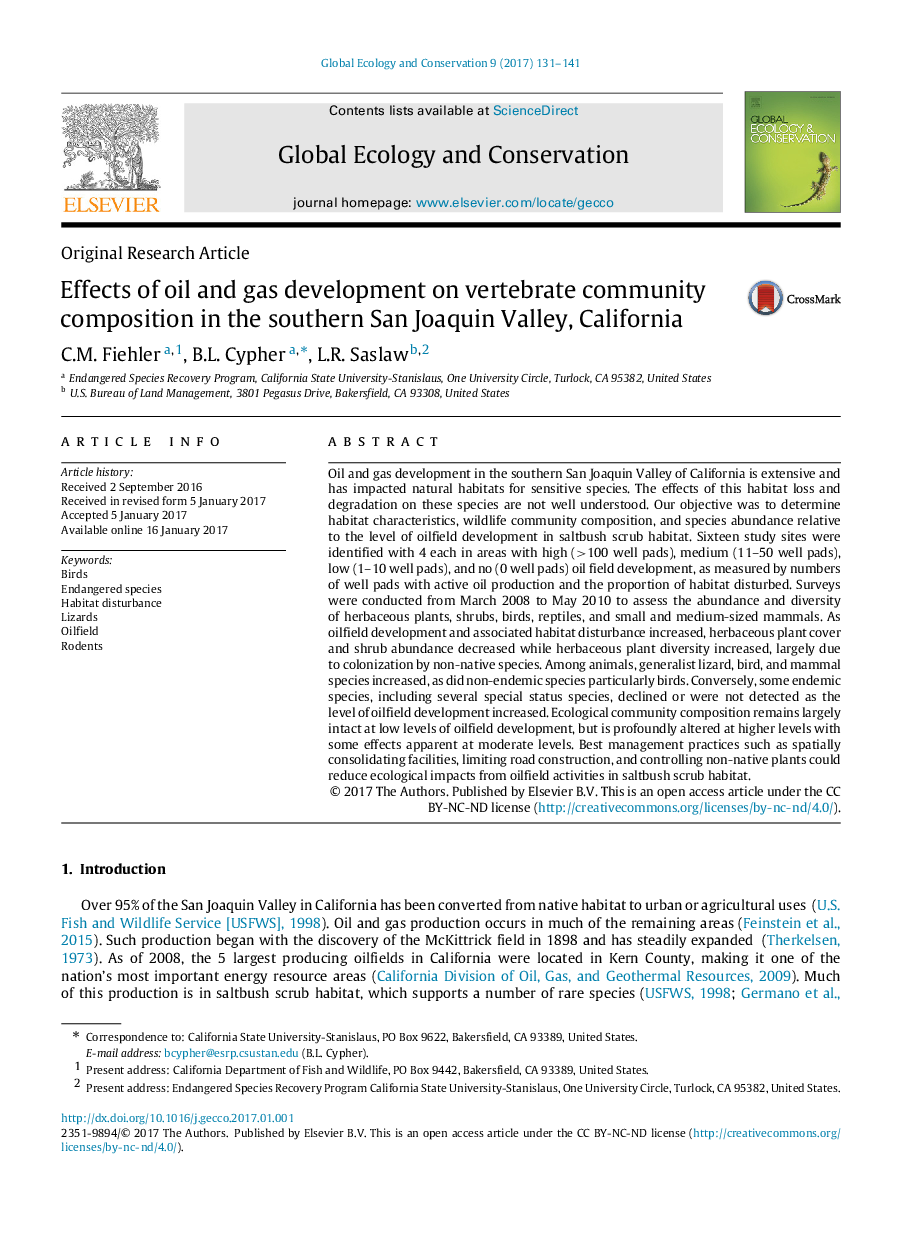| کد مقاله | کد نشریه | سال انتشار | مقاله انگلیسی | نسخه تمام متن |
|---|---|---|---|---|
| 5742435 | 1617658 | 2017 | 11 صفحه PDF | دانلود رایگان |
Oil and gas development in the southern San Joaquin Valley of California is extensive and has impacted natural habitats for sensitive species. The effects of this habitat loss and degradation on these species are not well understood. Our objective was to determine habitat characteristics, wildlife community composition, and species abundance relative to the level of oilfield development in saltbush scrub habitat. Sixteen study sites were identified with 4 each in areas with high (>100 well pads), medium (11-50 well pads), low (1-10 well pads), and no (0 well pads) oil field development, as measured by numbers of well pads with active oil production and the proportion of habitat disturbed. Surveys were conducted from March 2008 to May 2010 to assess the abundance and diversity of herbaceous plants, shrubs, birds, reptiles, and small and medium-sized mammals. As oilfield development and associated habitat disturbance increased, herbaceous plant cover and shrub abundance decreased while herbaceous plant diversity increased, largely due to colonization by non-native species. Among animals, generalist lizard, bird, and mammal species increased, as did non-endemic species particularly birds. Conversely, some endemic species, including several special status species, declined or were not detected as the level of oilfield development increased. Ecological community composition remains largely intact at low levels of oilfield development, but is profoundly altered at higher levels with some effects apparent at moderate levels. Best management practices such as spatially consolidating facilities, limiting road construction, and controlling non-native plants could reduce ecological impacts from oilfield activities in saltbush scrub habitat.
Journal: Global Ecology and Conservation - Volume 9, January 2017, Pages 131-141
